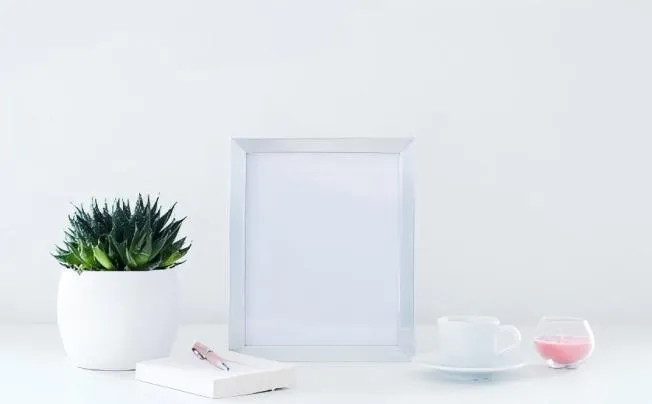Do Stainless Steel Flower Pots Scratch?
Stainless steel, as an alloy made of several components such as iron, chromium, and nickel, shines in many industries due to its superior performance and also occupies a place in flower pot manufacture.
How to tell if a stainless steel flower pot is scratched?
Visual inspection is the most natural method of detecting scratches on a stainless steel flower pot. Examine the flower pot's surface closely and rotate it in all directions in a well-lit area. Scratches are probably the cause of any linear marks that stand out sharply against the smooth surface around them. Because they are more likely to sustain scratches, pay close attention to the flower pot's edges, corners, and areas that frequently come into touch with other objects.
You may feel it by touching it in addition to seeing it. Move carefully and evenly as you run your fingertips over the flower pot's surface. If there are rough, uneven spots that feel different from smooth spots as your fingertips move over them, it might be a scratch. The touch method might be simpler to locate than basic visual inspection for certain small scrapes that are not very noticeable.
You can also use instruments like magnifying glasses to look closer at some potential scratches that are hard to identify. With the use of magnifying glasses, we can better see the intricacies of the scratches, including their depth and shape, and assess if they are scratches or not.

The impact of scratches on stainless steel flower pots
The aesthetics of a stainless steel flower pot are the first to suffer when scratches start to form on its surface. Scratches cause the once glossy and smooth surface to seem mottled, ruining the texture and overall appeal. This would surely lessen the stainless steel flower pot's decorative value in indoor and outdoor areas that emphasise decorative aspects, preventing it from perfectly blending into the surroundings and bringing brightness to the area.
Additionally, scratches may make stainless steel flower pots less resistant to corrosion. The primary barrier that prevents corrosion on stainless steel is the oxide film that covers its surface; scratches will erode this layer, exposing the internal metal to the elements. These exposed metal portions are more likely to react chemically when exposed to air, water, or other corrosive chemicals, which speeds up the corrosion process. The damaged region may eventually develop rust and corrosion, which will progressively extend to the entire flower container.
Furthermore, scratches may also shorten the lifespan of flower pots made of stainless steel. The flower pot's structural strength may deteriorate with increased corrosion, making it more prone to breakage, deformation, and other issues when exposed to outside forces or during prolonged use. This shortens the flower pot's typical service life and renders it incapable of serving as a stable and long-lasting growth container for green plants.

How to prevent stainless steel flower pots from being scratched?
1. Take extra caution when moving flower pots to prevent them from colliding with other hard things. Along the route of shipment, sharp things like stones and pieces of metal can be removed beforehand. If more than one person is needed to carry the flower pots, make sure that everyone moves in unison to avoid the pots rubbing against other things from uneven force.
2. Selecting the appropriate cleaning equipment is essential for preserving the surface of flower pots made of stainless steel. Steer clear of abrasive scouring pads and steel wool, which are harder-textured equipment. Cleaning with a soft sponge, microfiber cloth, or pure cotton cloth is advised. These delicate and soft materials are capable of efficiently removing dirt without causing any harm to the flower pot's surface. When cleaning, be mindful of the detergent you use. Avoid using detergents that contain bleach, strong acids, strong alkalis, or abrasives since these can erode the oxide coating on stainless steel's surface and lessen its ability to withstand scratches. The best options are mild soapy water and specialised stainless steel cleansers. After diluting the detergent, use a soft cleaning instrument to gently wipe the flower pot's surface, rinse it with fresh water, and then use a fresh, soft cloth to wipe it dry.
3. It's important to consider the storage conditions for the stainless steel flower pots. Avoid stacking them with other objects that could scratch them and try to keep them in a dry, sturdy location. To lessen the possibility of the flower pots coming into touch with hard surfaces like sand and stones on the ground, if they are kept outside, think about raising them with a specific flower pot rack or storage table. To keep the flower pots in good shape, take care to keep them out of direct sunlight and from prolonged exposure to rain.
4. You can also apply a protective film, like a clear plastic film or a special stainless steel protective film, on the stainless steel flower pot's surface. This protective covering can lessen the chance of scratches and somewhat cushion the impact of outside items on the flower pot's surface. However, while selecting a protective film, be sure that it is high-quality and won't leave the flower pot's surface with lingering glue stains or pollution.
Repair measures after scratches
When a stainless steel flower pot is unfortunately scratched, don't worry. Different repair measures can be taken according to the degree of the scratch.
For tiny scratches, toothpaste is a simple and effective restoration technique. Squeeze an adequate amount of toothpaste on a clean and soft cloth, and then gently wipe the scrape in the direction of the scratch. The toothpaste's microscopic particles can cover the scrape, gradually lessening its visibility, and they won't harm the stainless steel surface in any way. A certain lustre can be restored to the flower pot by wiping it with a dry cloth after rinsing it with clean water.
You can start by polishing the stainless steel flower pot using sandpaper made of the same material if the scratch is deep. Polish the scratch flat with coarser sandpaper first. Be mindful of using even force when operating and refrain from overpolishing. To lessen the marks that the coarse sandpaper left behind, use finer sandpaper for fine polishing after that. To make the flower pot's surface smooth and shining again, polish it with polishing paste or a professional stainless steel polishing agent after polishing. You can also look for expert metal repair services if you think doing it yourself will be too difficult. They can fix deep scratches more effectively since they have more specialised equipment and methods.

Selected Blogs
-
What customization services are available for metalworking customization?
2024-12-12
-
What Is The Difference Between A Plant Container And A Raised Bed?
2024-04-23
-
Garden Screening & Fence Panels
2024-04-23
-
Gardening pot selection tips
2024-04-17
-
The function and collocation of horticultural fire pot
2024-04-17


